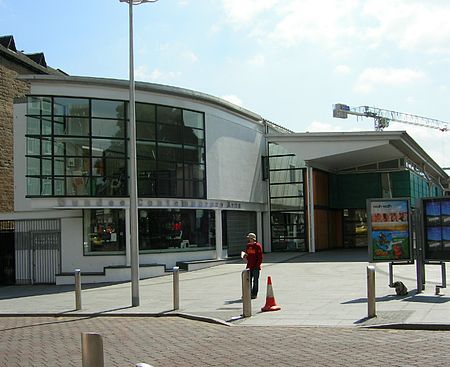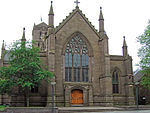Dundee Contemporary Arts
1999 establishments in ScotlandArt museums and galleries established in 1999Arts centres in ScotlandArts organisations based in ScotlandContemporary art galleries in Scotland ... and 2 more
Museums in DundeeUse British English from February 2018

Dundee Contemporary Arts (DCA) is an art centre in Dundee, Scotland, with two contemporary art galleries, a two-screen cinema, a print studio, a learning and public engagement programme, a shop and a café bar. The director of DCA is Beth Bate.
Excerpt from the Wikipedia article Dundee Contemporary Arts (License: CC BY-SA 3.0, Authors, Images).Dundee Contemporary Arts
Nethergate, Dundee University of Dundee Campus
Geographical coordinates (GPS) Address External links Nearby Places Show on map
Geographical coordinates (GPS)
| Latitude | Longitude |
|---|---|
| N 56.45709 ° | E -2.974796 ° |
Address
Dundee Contemporary Arts
Nethergate
DD1 4DU Dundee, University of Dundee Campus
Scotland, United Kingdom
Open on Google Maps









